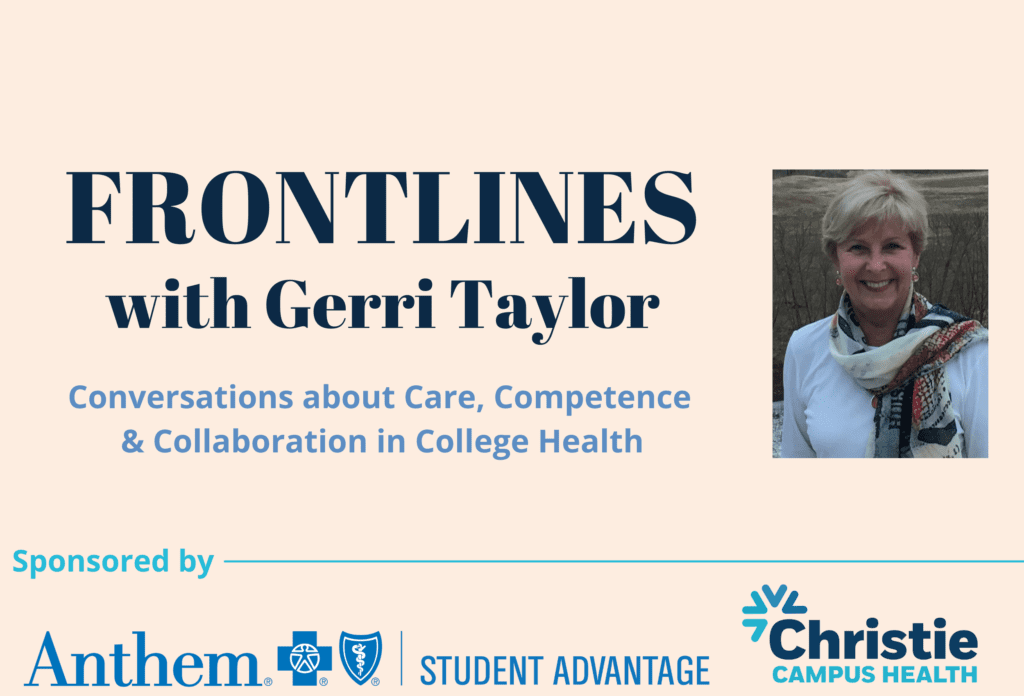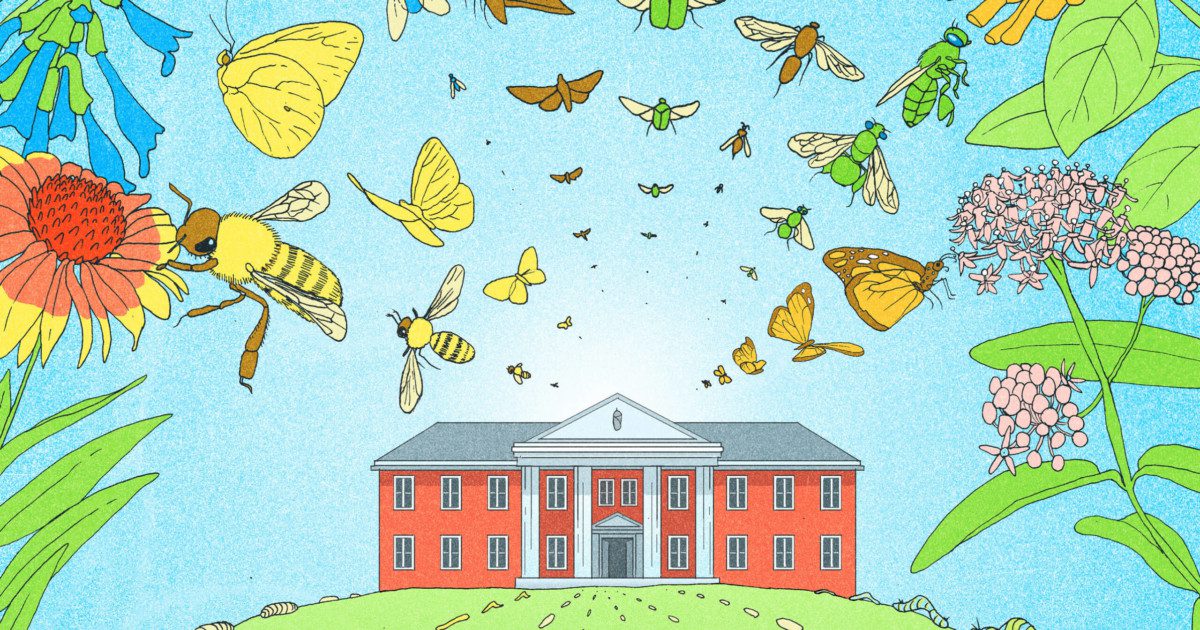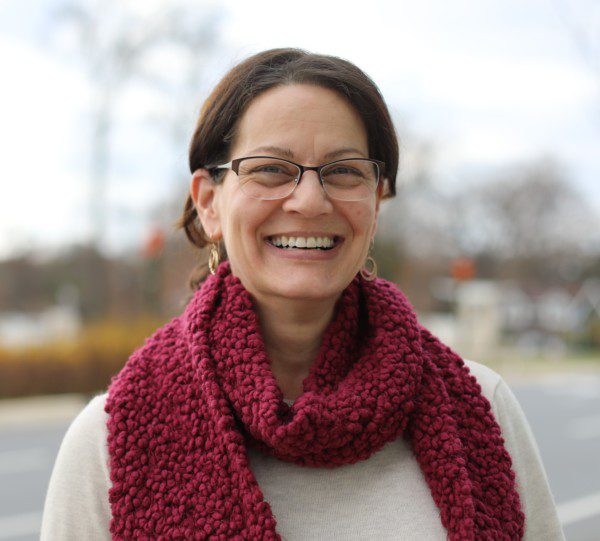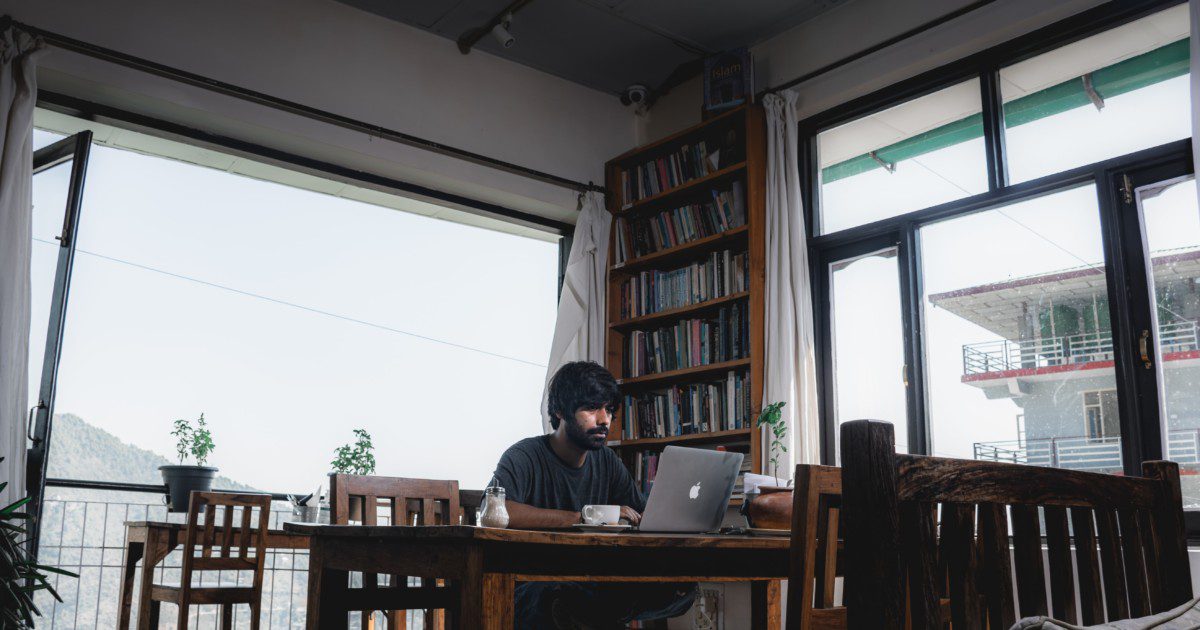There is not one defined set of experiences which provides the path to leadership in higher education. Jake Baggott’s trajectory, extending from his time as a student employee in the health center at Southern Illinois University to his current position as Associate Vice Chancellor for Student Health and Wellbeing and Executive Director of University Health Services at the University of Wisconsin, exemplifies this. His experience while working in the health center led him to decide that college health was the area in which he wanted to carve out his career. Through his journey from Southern Illinois University to the University of Alabama at Birmingham and then to the University of Wisconsin, he developed a deep understanding of the importance of the student perspective and listening to the student voice. His experience as chief of staff to the chancellor at Southern Illinois University gave him an in-depth view of the inner workings of a college and the many factors that impact decision-making at the highest levels.
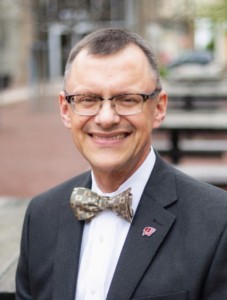
Jake Baggott: Associate Vice Chancellor for Student Health and Wellbeing and Executive Director of University Health Services at the University of Wisconsin
His years in active and reserve status in the U.S. Army and National Guard provided him with experience in communicating effectively and becoming a trustworthy source of health information – so important during the current COVID pandemic. Baggott is a highly respected leader in college health and has held several leadership positions culminating with the presidency of the American College Health Association. He is the recipient of the Edward Hitchcock award for Outstanding Contributions in College Health. In his spare time, he and his wife enjoy their horses, dogs, and chickens and the beauty of the Wisconsin prairies while on their ranch outside Madison. Those who know Jake appreciate him for his honesty, humility, wisdom and kindness along with his trademark bowtie, cowboy boots and Stetson hat!
Gerri Taylor: Jake, I very much appreciate your taking the time to speak with me. Let’s start with your path into college health.
Jake Baggott: When I started as an undergraduate, the director at Southern Illinois University (SIU) student health center, Sam McVay, an early leader in college health and wellness, offered me an opportunity to work in the student health center.
After being a student employee, I transitioned to the role of a regular staff person. The innovation, fresh approach, student development focus, and encouragement to think outside of the box intrigued me and I decided this was an area in which I wanted to work. My role increased significantly over the 30 years at SIU where I worked with incredible colleagues, helped grow and develop people, put teams together to tackle complex problems, and found a place where I could make a difference.
I learned over the years that college health and counseling were unique spaces where students feel the impact over their entire lives. Students have told me, years afterwards, how grateful they were for the care they received and how they have learned from their experiences with physical and emotional illness.
GT: So where did your military service fit in?
JB: I went into the army to pay for college as a first-generation college student. While supportive of my goals, my parents didn’t have the experience to help me navigate transitioning to college. If I was going to go to college, I would have to figure it out largely on my own. The military prepared me to make that step. I served on active duty primarily at Fort Leonard Wood, Missouri. After that, I continued in the Illinois National Guard for 20 years, retiring as a first sergeant.
GT: You were assistant and associate director at SIU and then left college health and became the chief of staff and assistant to the chancellor at Southern Illinois University (SIU)?
JB: I enjoyed a long tenure at SIU Student Health with a progressively larger leadership role. One of my goals was to become a student health director. When the director role at SIU opened up, I applied and was chosen as a finalist, but a longtime physician/health center director from a big 10 school was selected. It was a disappointment as it would have been satisfying to go from a student employee to become the director of the same program, but things don’t always turn out the way you want. I told my wife, Jenni, who has been incredibly supportive of my career, “You know, the only other job on campus that even intrigued me at all was the chief of staff job for the chancellor.” Unexpectedly, months later, that position was posted, and I threw my hat in the ring and was selected, so I stepped away from college health for a few years, taking on the role of chief of staff to the chancellor. It was a very challenging time for the institution and provided me with rich opportunities working with campus executives to advance the mission of the university.
“All of us in college health, higher-ed, and in leadership on college campuses have worked many hours to support the members of our campus communities. We have all experienced ups and downs, hopes and frustrations.”
GT: And now you are Associate Vice Chancellor!
JB: Yes, and the role as chief of staff gave me an invaluable understanding of the issues and challenges facing higher education leaders.
GT: You also earned a degree in healthcare law.
JB: Yes, I completed some graduate work toward a master’s in public administration. The SIU School of Law launched a master’s degree program in legal studies with a specialization in health law and policy for mid-career professionals. I became one of the first to graduate with the health law specialization. The course work was taken alongside traditional law students. It makes me smile to recall how most of the students had their laptops open to take their notes, where I and one of my MLS classmates sat in the front row, taking notes on paper and sharing our real-world career experiences. We were a bit low tech, but we were engaged, and I loved it. I took classes while still working and managing a new student health facility construction project at Southern Illinois University and building a new home as well.
GT: You held many leadership positions in the American College Health Association (ACHA), became a fellow, won the prestigious Hitchcock Award for excellence in college health, and finally. you were elected president of ACHA.
JB: ACHA clearly gave me opportunity to see beyond the campus experience and to network with other folks who shared my passion and my interests. My work for ACHA contributed to the richness of my college health experience.
GT: Then you left SIU and went to University of Alabama at Birmingham.
JB: The opportunity at University of Alabama at Birmingham (UAB) was unexpected and fortuitous. The CEO of ACHA, Doyle Randoll, called me and told me that UAB was looking for someone to develop a comprehensive health and wellbeing program for their growing student population. The opportunity sounded intriguing. After meeting with leaders on campus, I felt they were committed to developing a comprehensive health program, so I accepted the position of founding Executive Director of Health and Wellbeing at UAB. It was an opportunity to bring programs together in a comprehensive and integrated structure and included planning and building a new health and wellness facility in the heart of the campus. Due to increased utilization, the facility was expanded in a few short years. The university also created a new student affairs division which gave me the opportunity to broaden my leadership role as an assistant vice-president, adding veterans services and disability services to my portfolio. I worked with a great team of colleagues. Honestly, Gerri, I thought that’s where I would probably serve out my career.
GT: But you are now at the University of Wisconsin – what changed your mind?
JB: I had been at UAB for six years when I learned about the leadership opportunity at the University of Wisconsin at Madison. I knew their previous executive director, Dr. Sarah Van Orman, under whose leadership the university health services had thrived. UW-Madison had also recently established the new position of vice chancellor for student affairs and were developing a new student affairs structure. My wife, Jenni, and I agreed that this was worth considering.
Jenni has been a great support to me throughout this journey. She and I were sweethearts while still in school. I enlisted in the army and she went to college and on to vet school; our lives then went in separate directions. Twenty years later, our paths crossed again, and it was the right time for us. We share a passion for horses and relocating to Alabama afforded us time to support her passion for competing in the horse show ring, where she had some success at national level shows. Moving to Wisconsin meant putting that on pause, something she was willing to do for me. Wisconsin afforded me a larger role, including recreation and wellbeing, areas I was very interested in. We are very happy here, have a very comfortable home on a beautiful tract of land where we enjoy our quarter horses, two standard poodles, and small flock of chickens. Jenni is preparing to return to the horse show pen very soon. In the meantime, we enjoy gorgeous sunsets over the Driftless area of southwest Wisconsin.
GT: I saw that one of your positions in the service was in communications – has this helped during COVID?
JB: Communications has been vital to our effectiveness during the pandemic. Having the right message at the right time, planning ahead, anticipating new developments, being transparent with people, and building trust have all been vital to our efforts. I’m blessed to work with some great folks on the amazing communications teams here at UW. We have worked together crafting and editing countless messages and videos, hosting town hall meetings, giving interviews, and engaging with small groups in response to the pandemic.
GT: You use the words “transparency” and “trust,” both of which are so critical for the community in all public health messaging with the health leader as the voice of public health, especially now during our two and a half years of COVID.
JB: I always have felt that the public health voice I represented was being heard by campus leadership. I was very much in front of and helping to lead the institution’s response. As relatively new on the campus, the pandemic gave me a chance to meet, engage, and problem solve with people at all levels of the university – something that would have taken me years to accomplish otherwise. I was able to establish credibility early during a time of great uncertainty about COVID. Establishing and maintaining trust with the campus community has been vital. That trust was built upon data and facts, genuine acknowledgement of what we understood and were learning about COVID, and consistent and up-to- date messaging.
GT: We have seen burnout nationally due to the pandemic.
JB: We’ve spent a lot of time talking about how we can support our team. How do we create a culture and a community of care and support for each other? All of us in college health, higher-ed, and in leadership on college campuses have worked many hours to support the members of our campus communities. We have all experienced ups and downs, hopes and frustrations. The cumulative effect of the pandemic will be affecting our teams for some time to come. We quickly learned to pivot and to think creatively about how to support each other. Remote, virtual work has provided us with an unparalleled glimpse into the lives, families, and homes of our colleagues. It has reminded us that our lives are not just about our work and our professions. We have adapted out of necessity to new and unfamiliar work practices, technology, and rhythm. We’ve learned to problem solve together. We have become more acutely aware of those around us. The changing expectations of work and the competitive labor market has us critically considering our corporate willingness to afford greater flexibility and remain productive. We need to build on those lessons and continue to support new and innovative approaches to work that also demonstrate a commitment to the health and wellbeing of our teams.
What is challenging is that not all roles are the same and we need to be upfront and transparent about that. Not everybody is going to get the same flexibility, and that’s tough.
GT: How do you make those tough decisions?
JB: You have to look at the staff roles and the student and patient expectations. We have had a lot of success operating in a virtual environment. We learned lessons that would’ve taken us decades to have learned otherwise. We can create a regular remote working arrangement that has some predictability for some based on their roles, but we also have to consider the need for people to be on campus for certain activities and events. We need to continue to evaluate remote work agreements to see what’s working and what’s not working. I do think some flexibility has helped to retain and recruit some staff.
Our mental health team transitioned to an entirely virtual mode and did it well in a very short period of time. Our data show that students continued to seek mental health services at increasing rates during the pandemic with one third of the students preferring the virtual mode, another third were okay either way, and the balance preferred an in-person experience. There’s a place for each modality. We have to figure out how to best provide all three opportunities and align them with the ability to work remotely where possible. We’ve increased accessibility because of the virtual tools available to us. We increased mental health services in the evening a little longer because people could work from home, creating win-win scenarios. Regrettably, we can’t do that for all clinical services. We need to be sure everybody feels valued.
We continue to have discussions about in-person versus Zoom. What are the outcomes? What do the students and our patients tell us about that experience? What is the staff person’s experience like? We all know the value of collaboration, especially that in-person hallway consult. How is that being supported? When you work in a multidisciplinary team, you need the opportunities for collaboration. It’s the heart of many of the things that we do. And so navigating that and making sure that the staff and student experience is still rich and meaningful is key.
We used to be able to say employment in college health offered a quality of life and a population and an environment that is very satisfying. That made us competitive for top talent. Circumstances are quickly changing, and the private sector has adapted more readily. They’ve learned to compensate the virtual opportunities, the flexibility, and allowed people to find jobs that suit their lifestyle in ways that we at colleges have traditionally not embraced. We don’t have the same advantages in recruiting that we might have had before, so we need to now think outside of the box.
GT: I have read that at Wisconsin you have a COVID Student Advisory Team. That says a lot about your desire to ensure that the student voice and concerns are heard.
JB: Health protocols and changing circumstances have been stressful to our students. Feedback from our students has been very important in vetting our messaging strategies, sharing updates to health protocols, answering questions and building confidence in the health protocols. Their direct feedback was invaluable to our team.
GT: Tell me about the increasing mental health issues reported at colleges.
JB: Prior to the pandemic, addressing the demand for mental health services had become one of the most challenging issues. Anxiety and depression have long been leading causes of concern for college students and the pandemic has elevated those concerns to new levels. We have seen sharp increases in appointments for more urgent needs and a surge in numbers of first-time clients. As the pandemic is becoming less of an immediate threat, we are not seeing the need for support declining.
GT: I understand that the Governor announced five million dollars for mental health services in colleges in Wisconsin.
JB: Yes, the Governor had announced that he was allocating five million dollars to support mental health at our universities. This is an important infusion of support for a system in significant need. Gerri, these are one-time monies which can be impactful in the near-term. However, recurring funding will also be needed.
GT: I know you have worked to foster inclusiveness and diversity on campus.
JB: We are working hard to create an environment that is both inclusive and culturally competent. We have worked diligently to recruit and retain a highly-skilled and accomplished staff. That effort is paying off in some of the most diverse cohorts of new staff, practitioners, administrators, and department leaders in many years. That diversity is adding a richness to our work that other staff and students recognize and are responding to. We continue to think critically about our programs, services, and experiences through a lens that focuses on health equity.
GT: We are almost at the end of our time – are there any final words of wisdom you want to share?
JB: I will say that the pandemic has driven home the value of the public health role on campus in a way that would’ve been very difficult to achieve in the past. The campus has an awareness now that they didn’t have, and we don’t want to lose sight of that. We don’t want that awareness and commitment to fade as this pandemic moves to its next iteration. We have to leverage that opportunity, knowledge, and understanding to advance the issues that we’ve been working hard on all along. Mental health, well-being, environment, culture, inclusiveness and excellence, all those things that we work really hard at.
One other observation: Consider the gains we might have made if we had focused the same level of response and resources employed in the pandemic to positively impact health equity, racism, and social justice. Gerri, you know me – I show up wearing boots and a bow tie and a cowboy hat. My accent sounds more southern than upper Midwestern. That sets up a certain expectation. So, when people get to know me and understand the things that I really work hard at around diversity and inclusion, they start to realize you can’t make assumptions about anyone. The cowboy hat and the bow tie and the boots create conversations. People see you and they either smile or avert their gaze because they’re not real sure. They don’t always remember my name, but they always remember “Oh, you’re that guy.”
GT: Well – “that guy” is quite special and a gift to the University of Wisconsin. Thanks so much for taking the time, Jake, it’s been an hour and a half, and I know how busy you are – I am so grateful for having this time together and I am confident you will continue to “make a difference” at University of Wisconsin at Madison.

